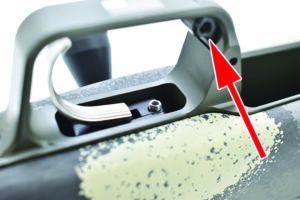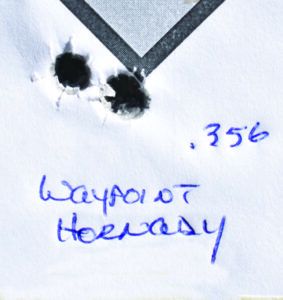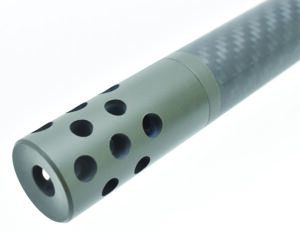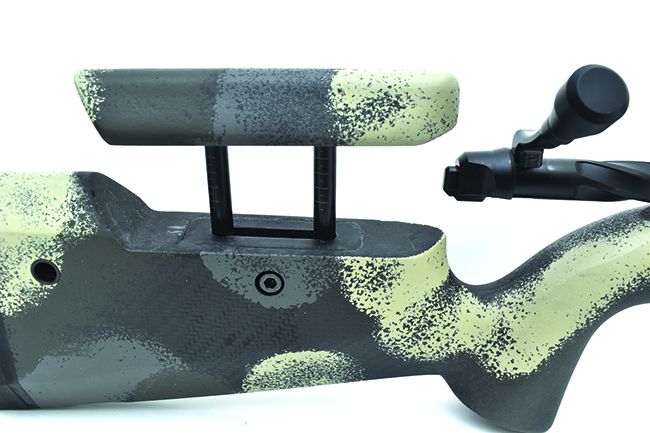The 6.5 PRC (Precision Rifle Cartridge) was designed by George Gardner of GA Precision and finalized and formalized by Hornady and then introduced at the 2018 SHOT Show. It is essentially a “magnumized” 6.5 Creedmoor (CM), using heavy-for-caliber, high-ballistic-coefficient bullets that require fast-twist barrels. Also like the 6.5 CM, the 6.5 PRC mandates short, fat cartridge cases along with very tight tolerances throughout the chamber. The result, like with the Creedmoor, is an accurate long-range-capable cartridge without a ton of recoil. Industry reports tell us that the 6.5 PRC is one of the fastest-growing cartridges in the long-range and hunting segments of the rifle world. Also, this is one of the cartridges you have searched for most frequently in our archives, so we thought this report was an absolute must.
Rifles capable of long-range shooting can quickly find themselves too heavy to carry in the field. We have also discovered that, as we age, we increasingly dislike weight and recoil in our rifles, so we set out to find up-to-date rifles chambered in 6.5 PRC that won’t tweak our backs or dislocate our shoulders. Our pocketbooks might be strained, however, because light and powerful can also be expensive, and because of the carbon-fiber-wrapped barrels on these rifles, the price tags are up there.
The first sample we chose was a Christensen Arms MPR (Modern Precision Rifle) $2400. As mentioned, the MPR sports a carbon-fiber-wrapped barrel designed to keep the tube as light weight, stiff, and cool as possible. The fore end and cheek piece are also carbon fiber and are mounted to a sculpted aluminum chassis.
Our first look at a Christensen Arms MPR came in the April 2021 issue where we examined it against long-range PRS-style rifles. And it almost won. The rifles in that comparison were chambered in 6mm Creedmoor. Here, we went to a heavier chambering and a lighter rifle. The 6.5 PRC is all about ballistics and down range energy. Where our 6 CM reloads pushed 2975 fps with a 109-grain bullet, and 6.5 Creed rounds are more in the 2700 fps range with 140-grain bullets, our 6.5 PRC loads were in the 2875 fps range with a 156-grain bullet. That launches a bullet with almost 2900 foot-pounds of energy at the muzzle and supersonic flight to about 1650 yards. That gives the hunter elk-worthy energy (at least 1500 foot-pounds) beyond 1600 yards. Please remember that just because you can shoot at extended ranges does not mean you should at extended ranges.
The second test rifle was a fully adjustable Springfield Armory Waypoint 2020, $2400. Using a carbon-fiber stock from AG Composites in the Evergreen camo pattern, the Waypoint offers a more conventional camo pattern for the stock, which some shooters will prefer.
Next came the brand-new Bergara MgLite rifle, $3000. Also a chassis-mounted system, the Bergara brings a minimalist design to the game.
We were expecting a great deal from these rifles, and to get the most from them, we needed a top-shelf optic. So we secured a Leupold Mark 5HD 3.6-18×44, a first-focal-plane scope equipped with the TMR reticle. At 26 ounces, the Mark 5HD is not super light, nor is it a monster to hump up a hill. The 3.6- to 18-power magnification gives us plenty of coverage for the field, and the 44mm objective is one of our favorite diameters — not so large that it has to be mounted with extra-tall rings, while still wide enough to get sufficient light to our eyes. At less than 12 inches in length, this Leupold packs a lot of features into a short tube that looks and works right on short or long rifles. We used Leupold 35mm rings to attach the glass to Picatinny rails on the rifles.

All three barrels have 1:8-inch twists, suitable for longer projectiles. Most of the factory ammunition we’ve seen has been in the 130- to 147-grain weight range. Velocities more than 3000 fps are possible, but we felt this cartridge could do better. We started experimenting with Berger 153- and 156-grain bullets more than two years ago and have been very pleased with the results on multiple 6.5 PRC platforms. We thought that would be the thing to do here as well. The Berger 153.5-grain Long Range Hybrid Target and 156-grain EOL Elite Hunter both did very well when pushed by near-maximum charges of VihtaVuori N565, N560, and Hodgdon H1000 powders. We lit the charges with CCI BR2 Large Rifle Benchrest primers. We assembled loads on Redding match dies. We finally admitted that we were tired of doing tons of case trimming with arthritic hands and bought a Henderson Precision power case trimmer (HendersonPrecision.com). The trimmer and a few extras cost us about $900, including the motor, but then allowed us to do in minutes what used to take us days. Very easy to use, and we don’t think that we have ever seen a smoother or more precise chamfer on our trimmed cases.
Here’s how these bolt actions performed:
Gun Tests Grade: A
$2400
Springfield got into the precision-rifle world with their Waypoint 2020 a couple of years ago. They started with their own action and then attached quite the list of existing parts. Their action uses a dual-lugged bolt that glides down EDM-cut raceways. We were impressed by how smoothly we could cycle that action. More of that smoothness comes from dual cocking cams, making the bolt just a bit easier to cycle. The bolt is fluted and uses a single, plunger-style ejector along with a sliding plate extractor. Bolt throw is 90 degrees, and the somewhat oversized bolt handle is removable, allowing you to replace it with anything that melts your butter.
| Action Type | Bolt |
| Overall Length | 45 in. |
| Barrel Length/Twist | 24 in., 1:8 |
| Overall Height w/o Scope Mount | 5.8 in. |
| Weight Unloaded | 7.7 lbs. |
| Weight Loaded | 8.2 lbs. |
| Sight Radius | NA |
| Action Finish | Green Cerakote |
| Barrel Finish | Carbon fiber, green Cerakote |
| Magazine Capacity | 3 rounds |
| Magazine Type | Detachable box, AICS pattern |
| Stock | Carbon fiber from AG Composites |
| Drop at Comb | Adjustable |
| Drop at Heel | 0.0 in. |
| Bedding | Pillar |
| Buttplate | Pachmayr Decelerator |
| Length of Pull | 13.75 in. |
| Receiver Scope-Base Pattern | Remington 700 |
| Trigger Pull Weight | 2.2 lbs. |
| Safety | 2-position rocker |
| Warranty | Limited lifetime for original owner |
| Telephone | (800) 680-6866 |
| Website | Springfield-Armory.com |
| Made In | U.S. |
The thumb safety is a two-position rocker style that would be expected on actions using a Remington 700 footprint. It is designed as a short-action length, perfect for the 6mm Creedmoor, 6.5 Creedmoor, and 308 Winchester chamberings available in the Waypoint. The 6.5 PRC is a slightly longer cartridge (maximum overall length of about 2.95 inches versus 2.82 inches for the others) and could be a very tight fit when trying to eject a loaded round. Springfield Armory slightly lengthens the ejection port, solving the problem for us. The top of the action is drilled and tapped for scope mounts, also using the Remington 700 pattern. Bottom metal really is metal. There is a small American flag lasered into the bottom of the trigger guard reminding where this rifle was made. The mag release appears in the forward end of the trigger guard and is big enough to locate easily. We did not have any problems activating it accidentally. The magazine was, once again, by Accurate Mag. It was the three-round all-metal version, and it worked perfectly for us.

We think Springfield did a good job with the action, and then they started adding proven parts from other manufacturers. First was the trigger from Trigger Tech. Our sample adjusted down to just over two pounds. Activation required virtually no take-up and break was very crisp. Next was the barrel made by BSF, which uses a different process in a carbon-fiber barrel build than we usually see. A stainless-steel tube is fluted longitudinally before the carbon fiber wrap is applied. Instead of a direct wrap, the fiber is installed where contact is only made with about 5% of the barrel. This provides a cooling channel that, while still rigid, aids in consistency while transitioning from cold to warm bore shots. The barrel was threaded 5⁄8×24, had a thread protector provided and came with a radial muzzle brake that worked very well. The action bottom metal and exposed metal parts of the barrel were green Cerakote.

The stock was made by AG Composites. CAD designed and CNC machined from a proprietary (of course) material, the stock was light and stiff. Inletting was precise, with no burrs or gaps to find. Ours was painted with the grey, green, and tan of the Springfield’s Evergreen camo pattern. The action screws attach to the receiver through metal pillars. The bottom of the butt stock and the fore end just in front of the magwell were flat and rode well on bags. The rest of the fore end was narrower and rounded off a bit. Our stock had three M-Lok slots machined in the fore end for the addition of a Picatinny rail or a sling swivel stud. The stock also displays five QD sockets on the sides and the bottom rear. We liked the vertical pistol grip and its good palm swell. It made the rifle very comfortable to shoot from a variety of positions. The cheek piece is attached to two vertical studs that can be raised or lowered inside the butt stock. Just find your spot and tighten the Allen screw on the right side. The cheek piece was long enough and smooth enough to work well, but it prevented the removal of the bolt where we had it set. No problem, loosen the Allen screw and raise the cheek piece up high or remove it. Clean your rifle and slide the studs back into the stock. Springfield provides index marks on the studs to help you return to the correct position. Everything was capped by a Pachmayr Decelerator recoil pad that further mitigates the already reasonable recoil impulse of a 6.5 PRC.
Our Team Said: Springfield Armory guarantees 0.75-minute-of-angle accuracy. The least accurate of the three ammo types tested provided a 0.76-inch three-shot groups on average — that being with the 156-grain Berger reloads we developed. The Normas came in with a 0.743-inch average and a best group of 0.62 inch. The Hornady 143-grain ELD-X rounds averaged 0.574-inch groups with a best group of 0.356 inch. Not too shabby.
6.5 PRC Range Data
| Norma Golden Target 143-grain Match | Bergara MgLite | Christensen MPR | Springfield Waypoint |
|---|---|---|---|
| Average Velocity | 2822 fps | 2892 fps | 2844 fps |
| Muzzle Energy | 2527 ft.-lbs. | 2656 ft.-lbs. | 2569 ft.-lbs. |
| Best Group | 0.610 in. | 0.518 in. | 0.620 in. |
| Average Group | 0.679 in. | 0.580 in. | 0.743 in. |
| Hornady Precision Hunter 143-grain ELD-X | Bergara MgLite | Christensen MPR | Springfield Waypoint |
| Average Velocity | 2908 fps | 3032 fps | 2925 fps |
| Muzzle Energy | 2686 ft.-lbs. | 2919 ft.-lbs. | 2717 ft.-lbs. |
| Best Group | 0.509 in. | 0.836 in. | 0.356 in. |
| Average Group | 0.568 in. | 1.080 in. | 0.574 in. |
| Berger Handloads 156-grain EOL | Bergara MgLite | Christensen MPR | Springfield Waypoint |
| Average Velocity | 2752 fps | 2865 fps | 2804 fps |
| Muzzle Energy | 2625 ft.-lbs. | 2845 ft.-lbs. | 2724 ft.-lbs. |
| Best Group | 0.631 in. | 0.336 in. | 0.691 in. |
| Average Group | 0.770 in. | 0.480 in. | 0.766 in. |
How We Tested: We fired the rifles side by side at American Shooting Centers in Houston, putting multiple three-shot groups downrange at 100 yards. While the ammo drought is not quite as severe as it once was, 6.5 PRC ammo is harder to find than 6.5 Creedmoor. That led us to checking out some different brands just to see how they would do. Sources were located though Ammoseek.com. First was Norma 143-grain Golden Target Match ammo from Mutiny Machine. Including shipping and handling, 20-rounds cost us $34.56 per box delivered. We got Hornady 143-grain ELD-X hunting ammo from Miwall Corp. ($51.70/20). To test heavier bullets, we ordered reloading components as follows: CCI BR2 Benchrest Large Rifle Primers, Hornady 147-grain ELD-M bullets as well as 156-grain Berger EOL hunting bullets, variously loaded with Hodgdon H1000, VihtaVuori N560, and N565 powders. Best results were obtained using the Berger bullets and VihtaVuori N565 powder, as shown in the accompanying tables. All rifles were well-sandbagged in a Caldwell TackDriver Pro (Brownells 100-027-023, $49), further supported by a large rear bag, heavy from Tab Gear ($34). Velocities were measured by LabRadar ($559).



























